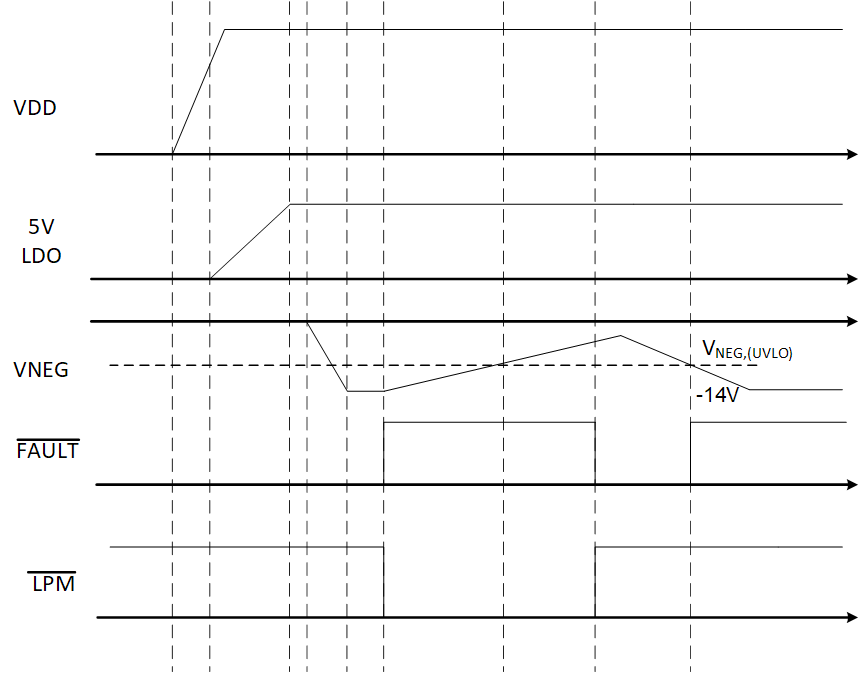SNOSD91B March 2019 – February 2020
PRODUCTION DATA.
- 1 Features
- 2 Applications
- 3 Description
- 4 Revision History
- 5 Pin Configuration and Functions
- 6 Specifications
- 7 Parameter Measurement Information
-
8 Detailed Description
- 8.1 Overview
- 8.2 Functional Block Diagram
- 8.3 Feature Description
- 8.4 Safe Operation Area (SOA)
- 9 Application and Implementation
- 10Power Supply Recommendations
- 11Layout
- 12Device and Documentation Support
- 13Mechanical, Packaging, and Orderable Information
8.3.6 Low Power Mode
In some applications, it is important to reduce quiescent current during low power mode such as start up or burst. The LPM pin reduces the quiescent current to support low power modes. When LPM is pulled low, the buck-boost converter stops to operate and reduce additional power loss, and the supply current in the low-power mode is typically 80 µA. Figure 16 indicates the low power mode operation. Once it is activated, VNEG will recharge FAULT will become high. Only after the LPM deactivates, the buck-boost converter begins to build the VNEG, and LMG341xR150 begins to operate within 1 ms.
 Figure 16. LPM in and out Timing Diagram
Figure 16. LPM in and out Timing Diagram